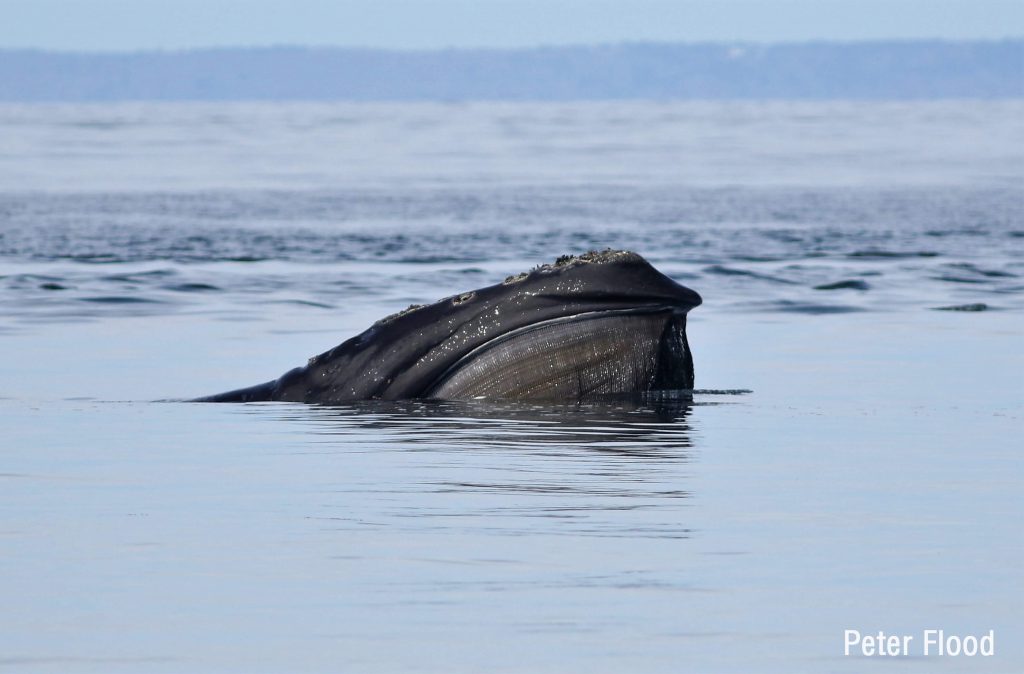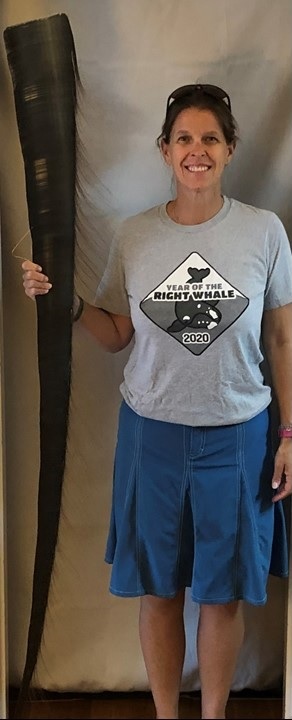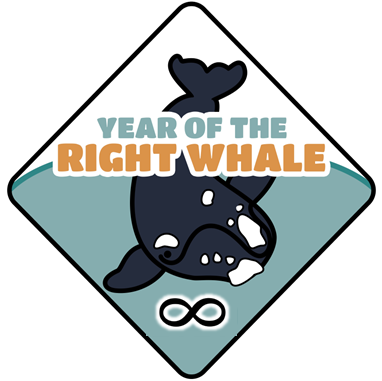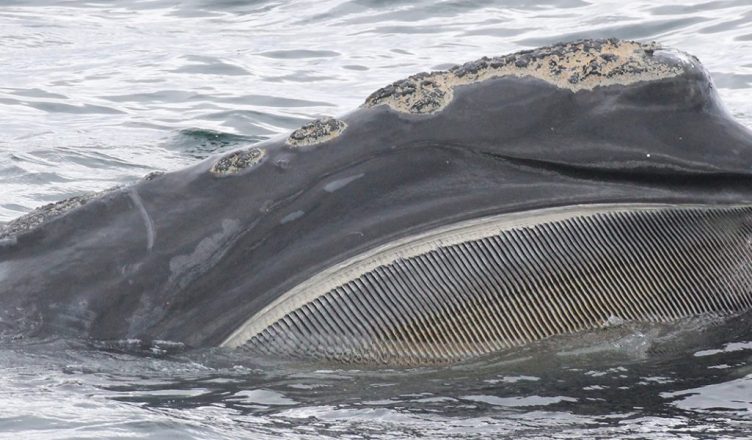Top image by Melissa Yow, Center for Coastal Studies, NOAA Permit #19315
There are over 90 different species of whales, dolphins and porpoises. They are divided into two groups–baleen and teethed–based on the structure that is in their mouth. Obviously, teeth are similar to human teeth, but baleen is a very unique structure. It is made of keratin, which is the same thing your hair and fingernails are made of. As you can see in the picture below, a North Atlantic right whale has 200-300 of these baleen plates closely lined together. The outside of the baleen (what we can see in this picture), looks like the teeth of a comb. The inside though, has hairs that trap large amounts of prey (fish, krill, or copepods in the case of right whales). In the case of right whales, as the whale swims through the water like this, the water is coming into its mouth and going out the sides through the baleen plates. The prey is trapped inside, then the whale swallows it!

Can you imagine if your mouth was filled with hairy plates instead of teeth? You can see what this is like by watching “Finding Nemo.” Marlin and Dory get trapped in a whale’s mouth on their way to Sydney. Marlin even tries to get through the baleen and can’t, but luckily for him this whale was helping them.
Baleen plates are on the top jaw of whales belonging to the family Mystecetus. Baleen plates are different sizes depending on where they are on the jaw. Smaller plates are at the front of the mouth, while larger plates are toward the back. Check out our co-coordinator Cynde standing next to a baleen plate from the back of a bowhead whale’s jaw! Bowhead whales are similar in size and body plan to right whales.

Want to see how baleen works in your own home? Here is a simple activity you can try:
- Gather materials around your home: A cup of water, basil, a bowl, and a comb.
- Pour the water into a bowl and add some basil.
- Take the comb and try pushing the basil around the bowl. This will show how the baleen is able to trap prey in a whale’s mouth while letting water pass through.
Want to see what it feels like when a whale eats? Try this activity:
- Gather materials around your home: A cup of water, sprinkles, a bowl, and a comb.
- Pour the water into a bowl and add some sprinkles.
- Take the comb and try pushing the sprinkles around the bowl. This will show how the baleen is able to trap prey in a whale’s mouth while letting water pass through.
- If you want to get a little messy, you can even try putting the sprinkles and water in your mouth, and them pushing the water out with you tongue (make sure you do it over the sink!). Were you able to keep the sprinkles in your mouth?
- Now try putting the comb in front of your mouth, did the sprinkles stay in?
Have fun!








